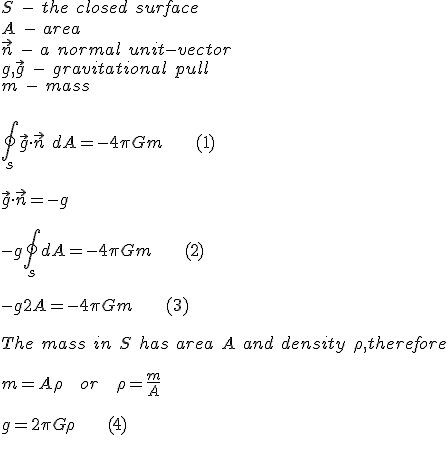Universal Acceleration
The Basics
According to Flat Earth Theory, gravity does not exist. Instead, there is a force that produces identical effects as observed from the surface of the earth. This force is known as "Universal Acceleration" (abbreviated as UA).
Objects on the earth's surface have weight because all sufficiently massive celestial bodies are accelerating upward at the rate of 9.8 m/s^2. The mass of the earth is thought to shield the objects atop it from the direct force of UA. Alternatively, it is possible that the force of UA can actually pass through objects, but its effect on smaller bodies is negligible (similar to gravity in RET cosmology, which only has a noticeable affect on very large objects).
However, not all Flat Earth models dismiss the theory of gravity. The Davis Model proposes that the earth is an infinite plane exerting a finite gravitational pull (g), which is consistent with Gauss's Law.
Equivalence Principle
The phenomenon we observe everyday when falling is currently substantiated in modern physics by what is called "The Equivalence Principle".
This principle in physics states that in a relative frame of reference, it is not possible to locally discern whether the frame is accelerating upwards, or if the object inside the frame is affected by gravity.
Several frequently asked questions are, "How is that I can jump and then come back down?" and "Why is it that I feel as though I'm being pulled toward the earth?"
Since the Earth is pushing you upwards, you are moving at the same speed as the Earth, much like when you are sitting in a car, the car is pushing you along. When you jump, your upward velocity is for a moment, greater than the Earth's so you rise above it. But after a few moments, the Earth's increasing velocity due to its acceleration eventually catches up.
Accelerating to the Speed of Light
It is a common misconception that if we were to continuously accelerate over time, we would eventually be moving faster than the speed of light. This is of course, incorrect as nothing with mass may do so.
When you look at equations from Special Relativity, you will find that accelerating towards the speed of light will never happen. The more you approach it, the slower you become from a separate frame of reference.
The relevant equation is:
v/c = tanh (at/c).
Since tanh(at/c) is always less than 1, you can never reach the speed of light.
Explanations for Universal Acceleration
The are several explanations for UA. As it is difficult for proponents of Flat Earth Theory to obtain grant money for scientific research, it is nigh on impossible to determine which of these theories is correct.
Dark Energy
This model proposes that the disk of our Earth is lifted by dark energy, an unknown form of energy which, according to globularist physicists, makes up about 70% of the universe. The origin of this energy is unknown.
Davis Plane
This model states that there is an infinite plane of exotic matter somewhere below the disk, pushing in the opposite manner of traditional gravity. This is a recent theory, and is in progress.
Alternatives to Universal Acceleration
The Davis model, suggested by John Davis, states that gravity does indeed exist. In this model, the Earth is an infinite disk with finite gravity. This was mathematically proven with the following:

